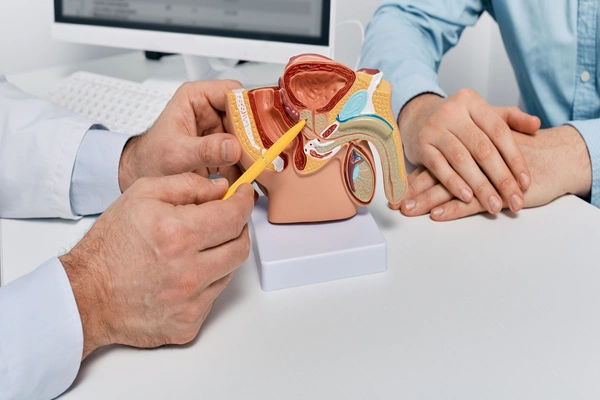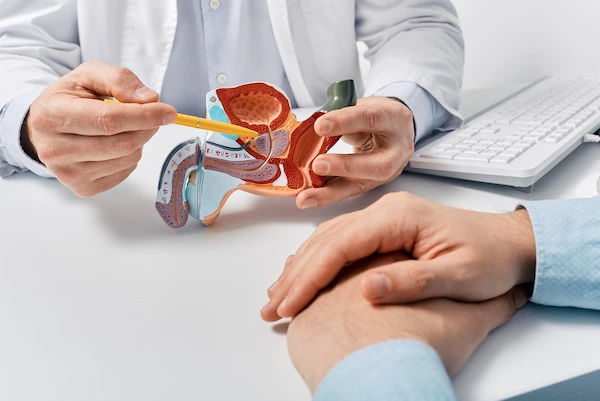Silent Threat: Understanding the Signs When Prostate Cancer Shows None
Prostate cancer often develops silently, showing no early symptoms. Learn why this happens, the subtle warning signs to watch for, and how proactive screening can save lives.

Written by Dr. J T Hema Pratima
Reviewed by Dr. Shaik Abdul Kalam MD (Physician)
Last updated on 8th Oct, 2025
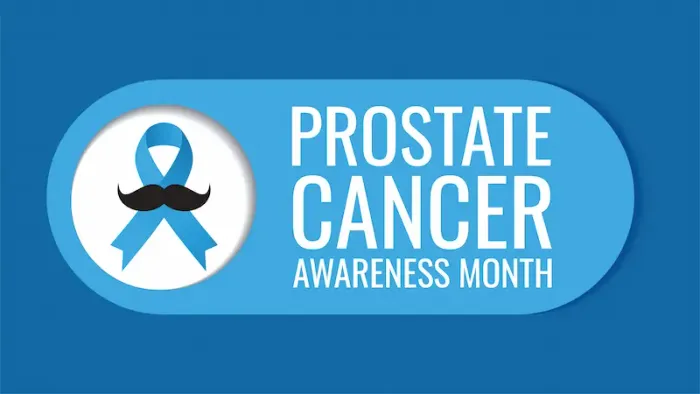
Introduction
Prostate cancer is one of the most common cancers affecting men, but it often carries a confusing and potentially dangerous trait: in its early, most treatable stages, it frequently shows no signs at all. This lack of symptoms can lead to a false sense of security, causing many men to delay crucial conversations with their doctors. This article will demystify this paradox. We will explore why prostate cancer can be a "silent" disease, the subtle signs that may eventually appear, and, most importantly, the proactive steps you can take for early detection even when you feel perfectly healthy. Understanding that "no symptoms" does not mean "no risk" is the first and most critical step in protecting your health.
The Paradox of Prostate Cancer: Why "No Signs" is the Biggest Sign
Many illnesses announce their presence with pain, fever, or other unmistakable signals. Prostate cancer is different. Its tendency to be asymptomatic early on is directly linked to its biology and location.
The Anatomy of the Prostate Gland
The prostate is a walnut-sized gland located below the bladder and in front of the rectum. Its primary function is to produce fluid that nourishes and transports sperm. The urethra, the tube that carries urine out of the body, runs directly through the center of the prostate. This anatomy is key to understanding its symptoms. When a tumor grows in the outer zones of the prostate, it may not impinge on the urethra or surrounding structures for a long time, causing no noticeable urinary changes.
How Slow-Growing Tumors Can Remain Silent
Many prostate cancers are slow-growing (indolent). A small, confined tumor may take years to grow large enough to cause any physical signs. During this entire period, a man may feel completely healthy. This is why relying solely on the presence of symptoms for asymptomatic prostate cancer detection is a risky strategy. The cancer may only be discovered incidentally during a check-up for an unrelated issue.
Consult a Urologist or Oncologist for the best advice
Beyond the Silence: Recognising the Subtle and Not-So-Subtle Signs
While early-stage cancer may be silent, as it grows, it can begin to press on the urethra or spread beyond the prostate, leading to noticeable changes. It's vital to remember that these symptoms are more often caused by non-cancerous conditions like benign prostatic hyperplasia (BPH) or an infection. However, they should never be ignored.
Urinary Changes: The Most Common Clues
Because the prostate surrounds the urethra, most signs of a growing tumor involve urination.
Obstructive Symptoms (Weak Flow, Dribbling)
These occur when the tumor blocks the flow of urine. You might experience a weak or interrupted urine stream, difficulty starting urination, dribbling at the end of urination, or a feeling that the bladder hasn't fully emptied.
Irritative Symptoms (Frequent Urination, Urgency)
These include a need to urinate frequently, especially at night (nocturia), a sudden, compelling urge to urinate, or pain or burning during urination (dysuria).
Sexual Function Changes
Prostate cancer can sometimes cause erectile dysfunction or painful ejaculation. Again, these are common issues with many potential causes, but they warrant a discussion with a doctor.
Signs of Advanced or Metastatic Prostate Cancer
When cancer spreads (metastasizes), typically to the bones, it causes more systemic symptoms. Recognising these signs of advanced prostate cancer is critical.
Bone Pain and Fractures
A persistent ache or pain in the back, hips, pelvis, or other bones is a common sign of metastasis. The pain may be worse at night.
Unexplained Weight Loss and Fatigue
A general decline in health, including unintentional weight loss and a profound lack of energy, can indicate advanced disease.
The Critical Role of Screening When Symptoms Are Absent
Since waiting for symptoms is not a reliable strategy, screening is the cornerstone of early detection for prostate cancer. Screening aims to find cancer before it causes signs.
PSA Test: What It Is and What the Numbers Mean
The prostate-specific antigen (PSA) test is a blood test that measures the level of PSA, a protein produced by both normal and cancerous prostate cells. An elevated PSA level can be a red flag for prostate cancer, but it can also be raised due to BPH, prostatitis (inflammation), or even recent sexual activity. There is no single "normal" PSA level; interpretation is based on age, the rate of change over time (PSA velocity), and other factors.
Digital Rectal Exam (DRE): The Physical Check
In a DRE, a doctor inserts a gloved, lubricated finger into the rectum to feel the prostate for any irregularities in size, shape, or texture, such as hard areas or lumps. While uncomfortable, it's a quick procedure that can detect tumors in areas not always reflected by the PSA test.
Who Should Get Screened and When?
Prostate cancer screening guidelines vary. Generally, men at average risk are advised to start the discussion with their doctor around age 50. Men at higher risk—including African American men and those with a family history of the disease—should often start this conversation earlier, around age 40 or 45. The decision to screen is personal and should be made after discussing the potential benefits and risks (like overdiagnosis) with a healthcare professional. If you are unsure about your risk, consulting a urologist online with Apollo24|7 can provide clarity.
Get Your Health Assessed
Risk Factors: Knowing Your Vulnerability is Your First Defense
Understanding what increases your risk helps you and your doctor make informed decisions about screening.
Unchangeable Factors (Age, Race, Family History)
Some risk factors for prostate cancer are beyond your control, but knowing them helps you stay vigilant:
• Age: Risk increases significantly after age 50.
• Race: African American men have a higher risk of developing and dying from prostate cancer.
• Family History: Having a father or brother with prostate cancer more than doubles your risk. Inherited gene mutations (e.g., BRCA1/2) also play a role.
Lifestyle Factors You Can Influence
Diets high in red meat and high-fat dairy and low in fruits and vegetables may increase risk. Obesity is linked to a higher risk of aggressive prostate cancer.
What to Do When There Are No Symptoms: An Action Plan
Feeling fine is a good thing, but it shouldn't lead to complacency. Your action plan is simple:
1. Know Your Risk: Review the risk factors above.
2. Start the Conversation: Don't wait for symptoms. If you're in your 40s or 50s (or earlier if high-risk), talk to your doctor about the pros and cons of prostate cancer screening.
3. Be Proactive: If you have a family history, inform your doctor. Apollo24|7 offers convenient home collection for PSA tests, making it easier to take the first step.
4. Report Changes: Even subtle changes in urinary or sexual function should be reported promptly.
Conclusion
The absence of signs is the most deceptive characteristic of early prostate cancer. It lulls many into inaction, allowing the disease to progress undetected. By understanding that "no symptoms" does not equal "no cancer," you empower yourself to take control of your health. The path forward is not based on waiting for a warning sign but on proactive engagement with healthcare providers. Initiate the conversation about your personal risk and the appropriateness of screening. Early detection dramatically increases the success of treatment and can often lead to less invasive options. Your health is your most valuable asset—protect it by being informed and proactive. If you're over 50 or have risk factors, booking a consultation with a doctor on Apollo24|7 is a simple, effective first step.
Consult a Urologist or Oncologist for the best advice
Consult a Urologist or Oncologist for the best advice

Dr. Sudhakar G V
Urologist
25 Years • MBBS, MS(Gen.Surgery), DNB Urology
Bengaluru
Apollo Clinic, JP nagar, Bengaluru

Dr. Pradeep Champawat
Urologist
10 Years • MBBS, MS, DNB Urology
Delhi
Apollo Hospitals Indraprastha, Delhi
(175+ Patients)

Dr. Pavan Kumar S K
Urologist
11 Years • MBBS, MS , Mch( Urology) DNB (Urology)
Bengaluru
Apollo Clinic, JP nagar, Bengaluru

Dr. Ramesh H
Urologist
16 Years • MBBS, MS , Mch( Urology)
Bengaluru
Apollo Clinic, JP nagar, Bengaluru

Dr. Prabir Basu
Urologist
19 Years • MBBS, MS General Surgery, DNB Genito-Urinary Surgery
Jodhpur Park
Dr. Prabir Basu urology clinic, Jodhpur Park
(175+ Patients)
Consult a Urologist or Oncologist for the best advice

Dr. Sudhakar G V
Urologist
25 Years • MBBS, MS(Gen.Surgery), DNB Urology
Bengaluru
Apollo Clinic, JP nagar, Bengaluru

Dr. Pradeep Champawat
Urologist
10 Years • MBBS, MS, DNB Urology
Delhi
Apollo Hospitals Indraprastha, Delhi
(175+ Patients)

Dr. Pavan Kumar S K
Urologist
11 Years • MBBS, MS , Mch( Urology) DNB (Urology)
Bengaluru
Apollo Clinic, JP nagar, Bengaluru

Dr. Ramesh H
Urologist
16 Years • MBBS, MS , Mch( Urology)
Bengaluru
Apollo Clinic, JP nagar, Bengaluru

Dr. Prabir Basu
Urologist
19 Years • MBBS, MS General Surgery, DNB Genito-Urinary Surgery
Jodhpur Park
Dr. Prabir Basu urology clinic, Jodhpur Park
(175+ Patients)
More articles from Prostate cancer
Frequently Asked Questions
1. Can you have a high PSA level and not have prostate cancer?
Yes, absolutely. A high PSA level can be caused by several non-cancerous conditions, including benign prostatic hyperplasia (BPH—an enlarged prostate), prostatitis (inflammation or infection of the prostate), recent urinary catheterisation, or even vigorous exercise like cycling. A high PSA is a signal for further investigation, not a diagnosis.
2. What are the early warning signs of prostate cancer that I should never ignore?
While early warning signs are often absent, you should never ignore persistent changes in urinary habits, such as increased frequency (especially at night), difficulty starting or stopping urination, a weak stream, blood in the urine or semen, or new onset of erectile dysfunction. Always consult a doctor for these symptoms.
3. How accurate is the PSA test for detecting cancer?
The PSA test is a useful but imperfect tool. It can miss some cancers (false negative) and suggest cancer is present when it is not (false positive). This is why it's used in conjunction with a DRE, patient history, and sometimes advanced imaging or biopsies to make an accurate diagnosis.
4. If prostate cancer is slow-growing, why is screening necessary?
Not all prostate cancers are slow-growing. Some are aggressive and can spread quickly. Screening helps identify these aggressive cancers early when they are most treatable. For slow-growing cancers, active surveillance (monitoring without immediate treatment) is often an option, allowing men to avoid side effects of treatment unless necessary.
5. What is the difference between prostate cancer symptoms and BPH symptoms?
The symptoms of urinary obstruction and irritation are very similar for both conditions because both involve an enlarged prostate pressing on the urethra. It is impossible to distinguish them based on symptoms alone. Medical tests, including a PSA test and a DRE, are necessary for a doctor to determine the underlying cause.

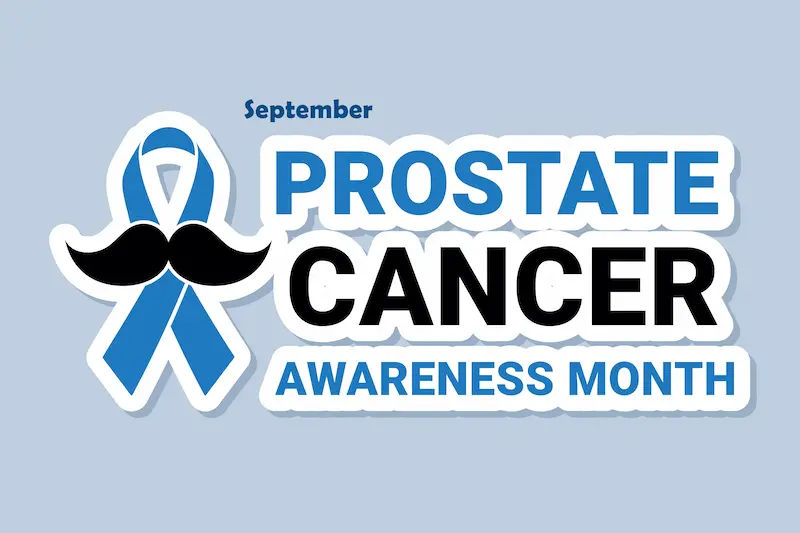
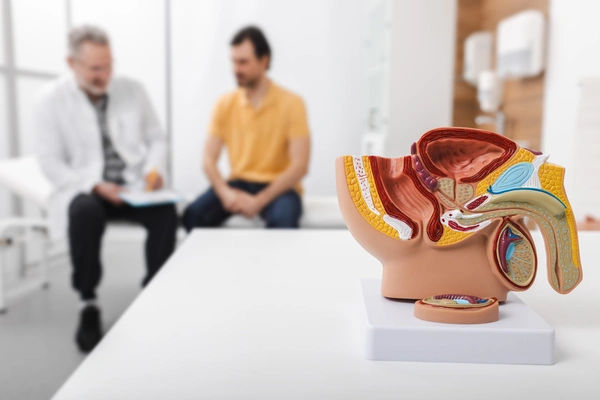
.webp)
